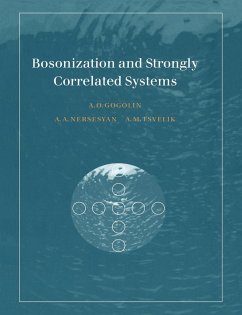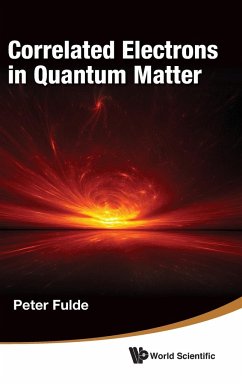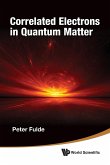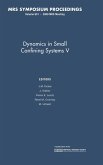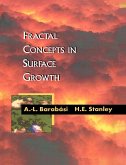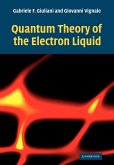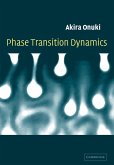Detailed account of important technique for researchers and graduate students working in condensed matter and theoretical physics.
This volume provides a detailed account of bosonization. This important technique represents one of the most powerful nonperturbative approaches to many-body systems currently available. The first part of the book examines the technical aspects of bosonization. Topics include one-dimensional fermions, the Gaussian model, the structure of Hilbert space in conformal theories, Bose-Einstein condensation in two dimensions, non-Abelian bosonization, and the Ising and WZNW models. The second part presents applications of the bosonization technique to realistic models including the Tomonaga-Luttinger liquid, spin liquids in one dimension and the spin-1/2 Heisenberg chain with alternating exchange. The third part addresses the problems of quantum impurities. Chapters cover potential scattering, the X-ray edge problem, impurities in Tomonaga-Luttinger liquids and the multi-channel Kondo problem. This book will be an excellent reference for researchers and graduate students working in theoretical physics, condensed matter physics and field theory.
Table of content:
Preface; Acknowledgements; Part I. Technical Aspects of Bosonization: 1. A simple case of Bose-Fermi equivalence: Jordan-Wigner transformation; 2. One-dimensional fermions. States near the Fermi points; 3. Gaussian model. Lagrangian formulation; 4. Conformal symmetry and finite size effects; 5. Virasoro algebra; 6. Structure of Hilbert space in conformal theories; 7. Current (Kac-Moody) algebras: the first assault; 8. Relevant and irrelevant fields; 9. Bose-Einstein condensation in two dimensions; Beresinskii-Kosterlitz-Thouless transition; 10. The sine-Gordon model; 11. Spin S=1/2 Heisenberg-Ising chain; 12. Ising model; 13. More about WZNW model; 14. Non-Abelian bosonization; Part II. Application of the Bosonization Technique to Physical Models in (1+1)-Dimensions: 15. Interacting fermions with spin; 16. Spin-1/2 Tomonaga-Luttinger liquid; 17. Instabilities of Tomonaga-Luttinger liquid; 18. Interacting fermions with broken spin rotational symmetry; 19. What happens with Tomonaga-Luttinger liquid in three dimensions; 20. Two weakly coupled Tomonaga-Luttinger liquids; spinless case; 21. Spin liquids in one dimension: example of spin-ladders; 22. Spin-1/2 Heisenberg chain with alternating exchange; 23. Superconductivity in a doped spin liquid; 24. Edge states in quantum Hall effect; Part III. Single Impurity Problems: 25. Potential scattering; 26. X-ray edge problem (Fermi liquids); 27. Impurities in Tomonaga-Luttinger liquid; 28. Multi-channel Kondo problem; General Bibliography; Index.
This volume provides a detailed account of bosonization. This important technique represents one of the most powerful nonperturbative approaches to many-body systems currently available. The first part of the book examines the technical aspects of bosonization. Topics include one-dimensional fermions, the Gaussian model, the structure of Hilbert space in conformal theories, Bose-Einstein condensation in two dimensions, non-Abelian bosonization, and the Ising and WZNW models. The second part presents applications of the bosonization technique to realistic models including the Tomonaga-Luttinger liquid, spin liquids in one dimension and the spin-1/2 Heisenberg chain with alternating exchange. The third part addresses the problems of quantum impurities. Chapters cover potential scattering, the X-ray edge problem, impurities in Tomonaga-Luttinger liquids and the multi-channel Kondo problem. This book will be an excellent reference for researchers and graduate students working in theoretical physics, condensed matter physics and field theory.
Table of content:
Preface; Acknowledgements; Part I. Technical Aspects of Bosonization: 1. A simple case of Bose-Fermi equivalence: Jordan-Wigner transformation; 2. One-dimensional fermions. States near the Fermi points; 3. Gaussian model. Lagrangian formulation; 4. Conformal symmetry and finite size effects; 5. Virasoro algebra; 6. Structure of Hilbert space in conformal theories; 7. Current (Kac-Moody) algebras: the first assault; 8. Relevant and irrelevant fields; 9. Bose-Einstein condensation in two dimensions; Beresinskii-Kosterlitz-Thouless transition; 10. The sine-Gordon model; 11. Spin S=1/2 Heisenberg-Ising chain; 12. Ising model; 13. More about WZNW model; 14. Non-Abelian bosonization; Part II. Application of the Bosonization Technique to Physical Models in (1+1)-Dimensions: 15. Interacting fermions with spin; 16. Spin-1/2 Tomonaga-Luttinger liquid; 17. Instabilities of Tomonaga-Luttinger liquid; 18. Interacting fermions with broken spin rotational symmetry; 19. What happens with Tomonaga-Luttinger liquid in three dimensions; 20. Two weakly coupled Tomonaga-Luttinger liquids; spinless case; 21. Spin liquids in one dimension: example of spin-ladders; 22. Spin-1/2 Heisenberg chain with alternating exchange; 23. Superconductivity in a doped spin liquid; 24. Edge states in quantum Hall effect; Part III. Single Impurity Problems: 25. Potential scattering; 26. X-ray edge problem (Fermi liquids); 27. Impurities in Tomonaga-Luttinger liquid; 28. Multi-channel Kondo problem; General Bibliography; Index.

